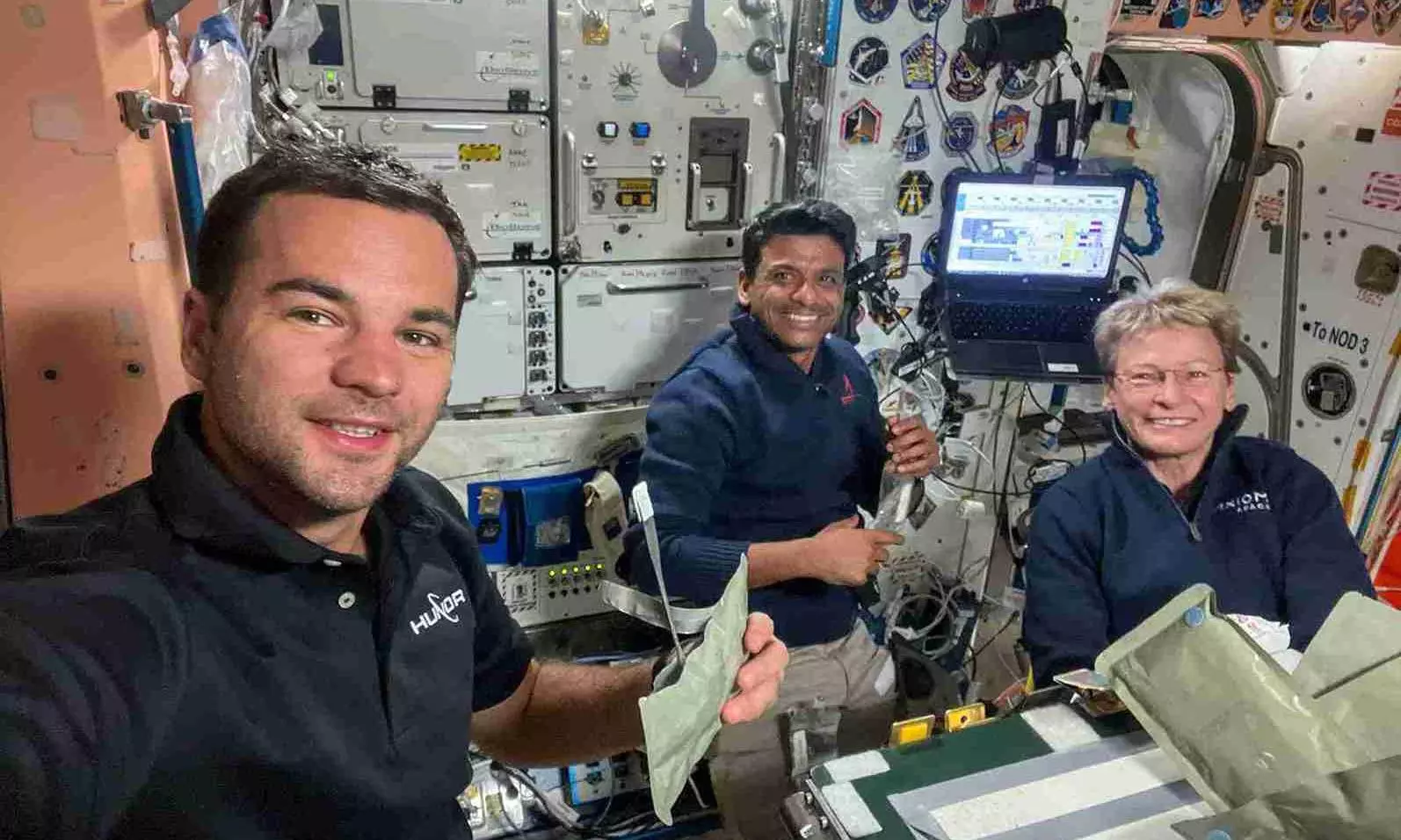
Shubhanshu Shukla to undergo 7-day rehab after returning to Earth on July 15
“Post splashdown, the Gaganyatri will undergo a rehabilitation program (about 7 days) under the supervision of the Flight Surgeon to adapt back to Earth's gravity,” the ISRO said

Astronaut Shubhanshu Shukla will undergo a seven-day rehabilitation programme following his splashdown off the California coast on July 15, marking his return to Earth after an 18-day mission aboard the International Space Station (ISS).
Shukla and three other astronauts – commander Peggy Whitson and mission specialists Slawosz Uznanski-Wisniewski and Tibor Kapu of Poland and Hungary – had docked at the ISS on June 26 as part of the commercial Axiom-4 mission.
To undock on July 14
The four astronauts are scheduled to undock from the ISS on Monday, July 14, at 4.35 pm IST (7.05 am ET), the National Aeronautics and Space Administration said in a statement.
Also read | Astronaut Shubhanshu Shukla to return from ISS on July 14
According to ISRO, following a series of orbital manoeuvres after undocking Crew Dragon spacecraft is expected to splash down near the coast of California on July 15, 2025, at 3 pm IST.
“Post splashdown, the Gaganyatri will undergo a rehabilitation program (about 7 days) under the supervision of the Flight Surgeon to adapt back to Earth's gravity,” the ISRO said in an update on the Axiom-4 mission.
ISRO paid approximately Rs 550 crore for Shukla's travel to the ISS, an experience that will help the space agency in planning and execution of its human spaceflight programme, Gaganyaan, set to take to orbit in 2027.
Close monitoring
“ISRO's flight surgeons are continuously monitoring and ensuring the overall health and fitness of the Gaganyatri through participation in private medical/psychological conferences. Gaganyatri Shubhanshu is in good health and high spirits,” ISRO said.
Shukla and the three other astronauts are expected to board the spacecraft at 2.25 pm IST, wear their space suits and carry out the necessary tests before they begin their journey to Earth.
The ISS is orbiting the Earth at a speed of 28,000 kilometres per hour, and the spacecraft will initiate the autonomous undocking process to gradually slow down and re-enter the planet's atmosphere for a splashdown off the coast of California.
“The Dragon spacecraft will return with more than 580 pounds of cargo, including NASA hardware and data from over 60 experiments conducted throughout the mission,” NASA said.
Axiom-4 mission commander Peggy Whitson said in a post on X: “Enjoying our last few days on the @Space_Station with rehydrated shrimp cocktails and good company! #Ax4.” Shukla had brought carrot halwa and mango nectar (aamras) to the party.
Experiments at ISS
On the experiment front, Shukla worked on the microalgae experiment, deploying and stowing samples that could one day provide food, oxygen and biofuels for deep-space missions, Axiom Space said in a statement.
The resilience of the microalgae makes them a promising asset to sustain life beyond the Earth, it added. “Exercise research and spacesuit maintenance topped the schedule for the Expedition 73 and Axiom Mission 4 (Ax-4) crews on Thursday,” the NASA statement said.
The crew also continued the Voyager Displays study, which examines how spaceflight affects eye movement and coordination.
Data collection
The crew collected data for a study to explore how astronauts perceive and interact with their environment in orbit, which is critical for designing mentally supportive habitats for long-duration missions.
Also read | Shubhanshu Shukla studies bone health, radiation exposure on ISS
Another study focused on cerebral blood flow, investigating how microgravity and elevated carbon dioxide levels affect cardiovascular function, which could later benefit both astronauts and patients on Earth.
Radiation exposure was monitored using the compact Rad Nano Dosimeter, a tool for assessing astronaut safety.
The crew took part in the Acquired Equivalence Test, a cognitive experiment that measures learning and adaptability in space, and supported the PhotonGrav study by collecting brain-activity data to explore neuroadaptive technologies for space and medical applications.
(With agency inputs)

